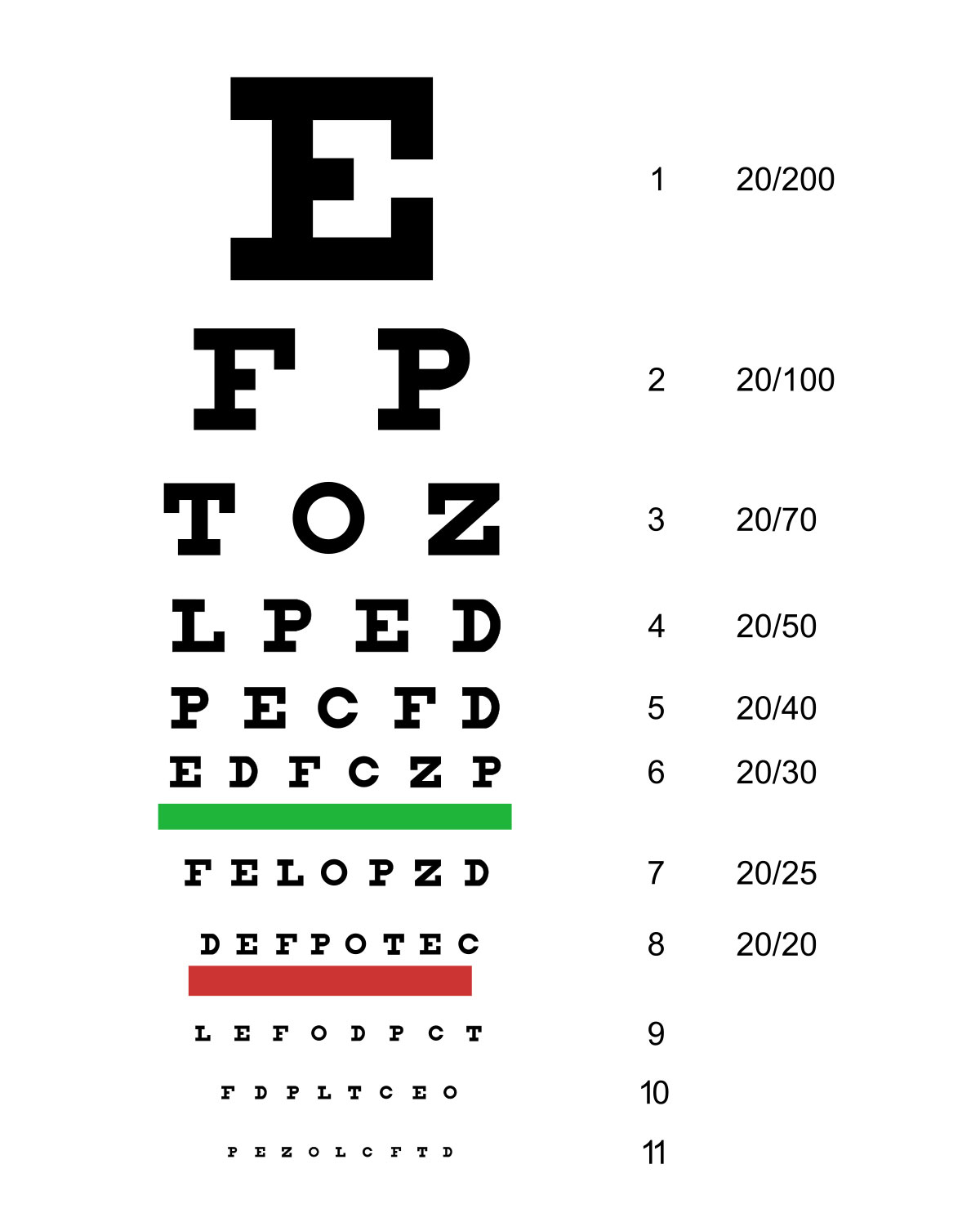What Exactly Is 20/20 Vision?
Sight is a critical sense that helps us understand what is happening around us. It helps us identify and interpret the environment, as well as assists us in our balance, orientation, and coordination.
When you hear the term ‘20/20 vision’, you probably know it means perfect eyesight, but what exactly does that mean?
Today, we’re here to help you understand everything you need to know about it.
Does having 20/20 vision mean you have perfect vision?
20/20 vision is a term used to refer to the ability to see clearly from 20 feet away. It’s a measure of visual acuity and the ratio is considered to be the ideal average when it comes to one’s ability to see.
Visual acuity on the other hand is a term that refers to one’s clarity or sharpness of vision. It’s how well one can see things, and identify their shapes as well as their details from a given distance.
While 20/20 vision refers to “normal” vision, it’s actually not considered “perfect” vision. 20/20 vision only indicates how well and how sharply you see things at a certain distance. This doesn’t include other factors of visual acuity.
One person can have a vision of 20/30 and see even better than someone who has 20/20. While the latter can see things more clearly at a closer distance, the former might have better peripheral vision and depth perception.
Another thing to note is while 20/20 vision is considered “normal” for eye care professionals in the U.S., this is not necessarily the case everywhere in the world. In other countries such as India and in Europe, eye care professionals use the term 6/6 for normal vision because they use a different metric for measurement. Instead of measuring with feet, they use meters.
Do I need glasses if I have 20/20 vision?
People use glasses for a variety of reasons. With the exception of sunglasses, some people who have 20/20 vision still need to wear prescription glasses due to factors such as dyslexia and astigmatism. Those with 20/20 vision may also need better focus, which is why they wear special glasses with high-definition lenses.
If you’re unsure whether you need glasses, you can always schedule an eye exam with a trusted optometrist or ophthalmologist. As a bonus, eye exams keep your vision in check and can help prevent eye disorders.
How common is 20/20 vision?
While 20/20 vision is considered normal, it isn’t as common as you would think. In the U.S., it was reported that only 35% of adults have 20/20 vision without any corrective surgery or visual aid. This number rises to 75% if it includes those who wear contact lenses or eyeglasses and those who had corrective surgery.
How is visual acuity tested?
Visual acuity is usually measured using a Snellen chart. This chart’s considered the standard when measuring visual acuity, and it’s the one you see when visiting an eye doctor with numbers and letters that decrease in size as you go down.
To get an accurate gauge of your visual acuity, the letters and numbers are set in different sizes at varying distances.
A standard Snellen chart would have the first number at 20 which stands for 20 feet at which the test is meant to be conducted. The next number is the distance at which optotypes or the smallest standardized letters would be visible.
To give you a clearer example of how this works, we’ll be using 20/20 vision as an example. What this visual acuity measurement means is you can see the smallest letters and numbers from 20 feet away.
However, if you have a visual acuity measurement of 20/60, this means that you can only see things at 20 feet which most people can at 60 feet.
A pretty simple and straightforward concept!
What visual acuity is better than 20/20 vision?
As mentioned before, having 20/20 vision means that you have normal vision. With that being said, there are visual acuities that are better than 20/20 vision such as 20/15 and 20/10.
People with visions at this range can see things from a lot farther than those with 20/20 vision. Those with 20/15 vision can clearly see things from 20 feet away that the average person can only see from 15 feet away. The same goes for 20/10 vision, except they can clearly see things from 20 feet away that most people can only see from 10 feet away.
As long as you have any number less than 20 in the second part of your visual acuity fraction, it means your vision is already better than someone with 20/20 vision.
Keen to dive deeper into prescriptions? Here’s our guide on how to read eyeglass prescriptions.
What visual acuity is worse than 20/20 vision?
To tell whether one has worse visual acuity than 20/20, the second number in your visual acuity fraction has to be more than 20.
For example, those with 20/40 vision can only see things at 20 feet which most people can at 40 feet. In fact, this visual acuity ratio is considered the cutoff for obtaining an unrestricted driver’s license in most states. Having a visual acuity of 20/200 and higher means that you’re legally blind.
What causes you to have less than 20/20 vision?
Numerous factors contribute to why your vision may be less than the standard 20/20. This can range from lifestyle factors to eye conditions. Here are some of the main factors that may cause your vision to go below 20/20:
- Aging
- Overexposure to UV rays
- Excessive consumption of alcohol
- Too much screen time
- Overuse of eye drops
- Smoking
- Eye conditions such as farsightedness, nearsightedness, presbyopia, and astigmatism
- Health disorders such as diabetes, glaucoma, and strabismus
- Not wearing protective gear
- Infrequent eye exams
How can I reduce my risk of having less than 20/20 vision?
While it is impossible for you to change the eyesight you were born with or reverse vision deterioration, there are ways to prevent or minimize vision loss.
- Try the 20-20-20 rule. This is greatly beneficial for those who work at a screen as it helps rest your eyes. For every 20 minutes, look at something that’s 20 feet away for 20 seconds. Keep blinking as well so that your eyes don’t get dry.
- Avoid or cut down on smoking and drinking.
- Schedule regular eye exams.
- Be knowledgeable about any history of eye disease in your family. After which, let your eye care provider know so they can advise on necessary tests and precautions.
- Incorporate more fresh fruits and vegetables into your diet, especially those with eye-friendly nutrients. This also has the bonus of keeping obesity at bay, an affliction that can also affect your eyes.
- Practice good contact lens hygiene, like keeping your hands clean before applying and removing them.
- When working or participating in contact sports, wear protective glasses.
- Wear sunglasses when going out on sunny days and when you’re working with bright lights.
- Maintain your blood pressure and glucose at optimum levels. This is especially vital if you have diabetes.
Why is having good vision important?
It goes without saying but bears repeating: your eyes play an important role in your quality of life. Being able to see the world around you clearly not only lets you enjoy life to the fullest but helps you lead a healthier and normal life too.
To ensure that vision issues don’t get in the way, start looking out for your eyes’ health as early as possible. For more eye care tips, be sure to keep your eyes locked on our blog.

Written by:
Shu Kie












